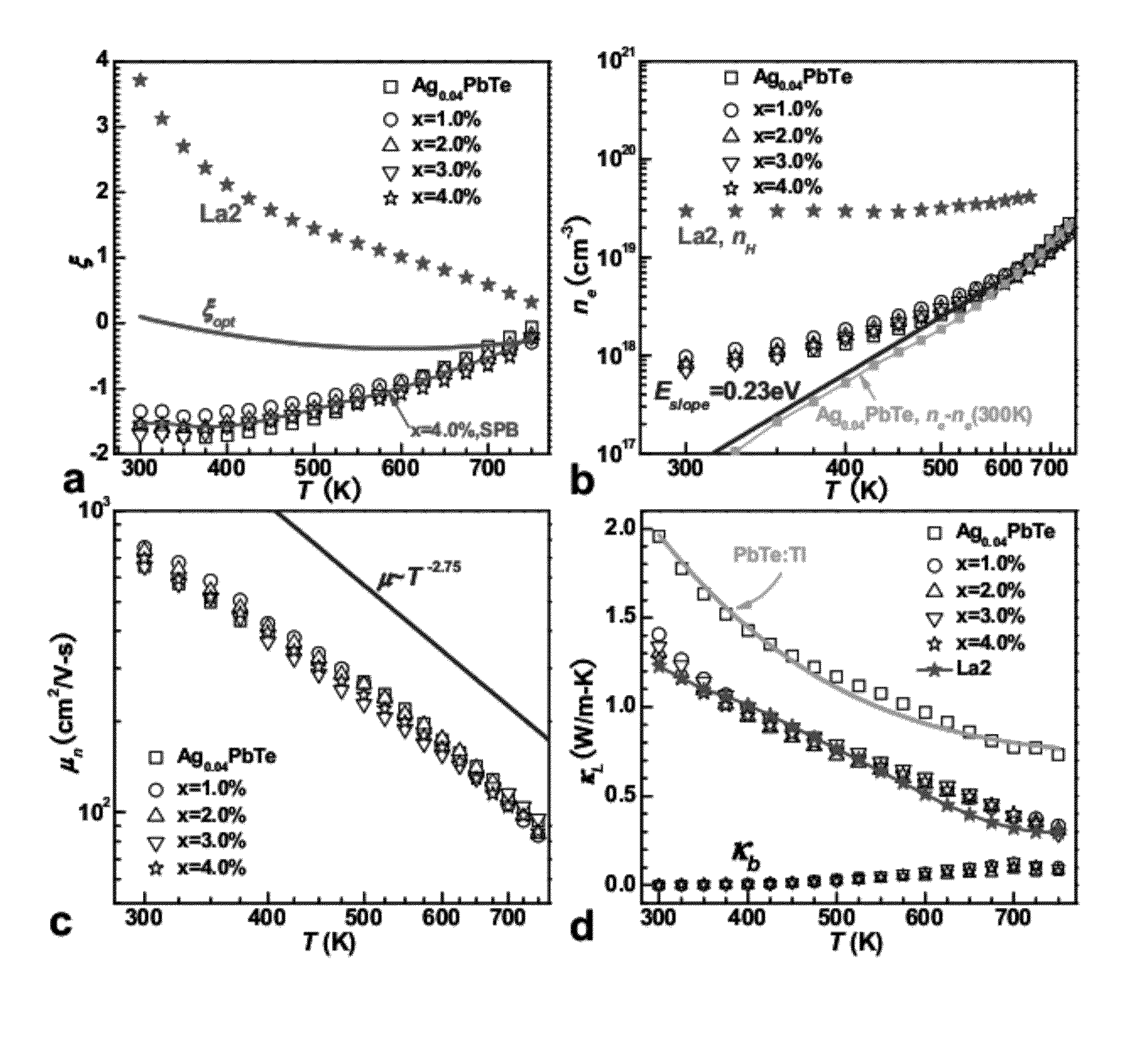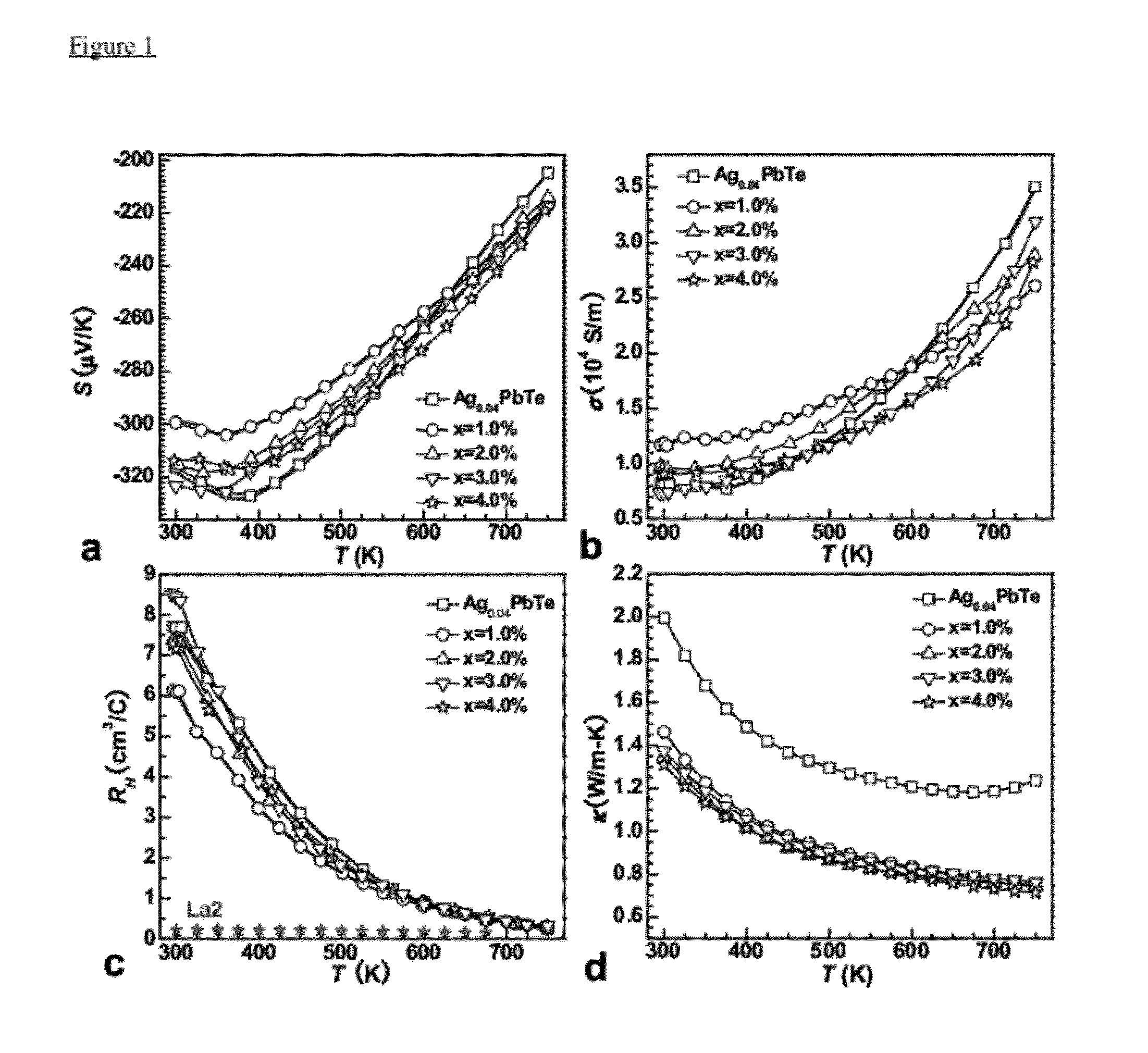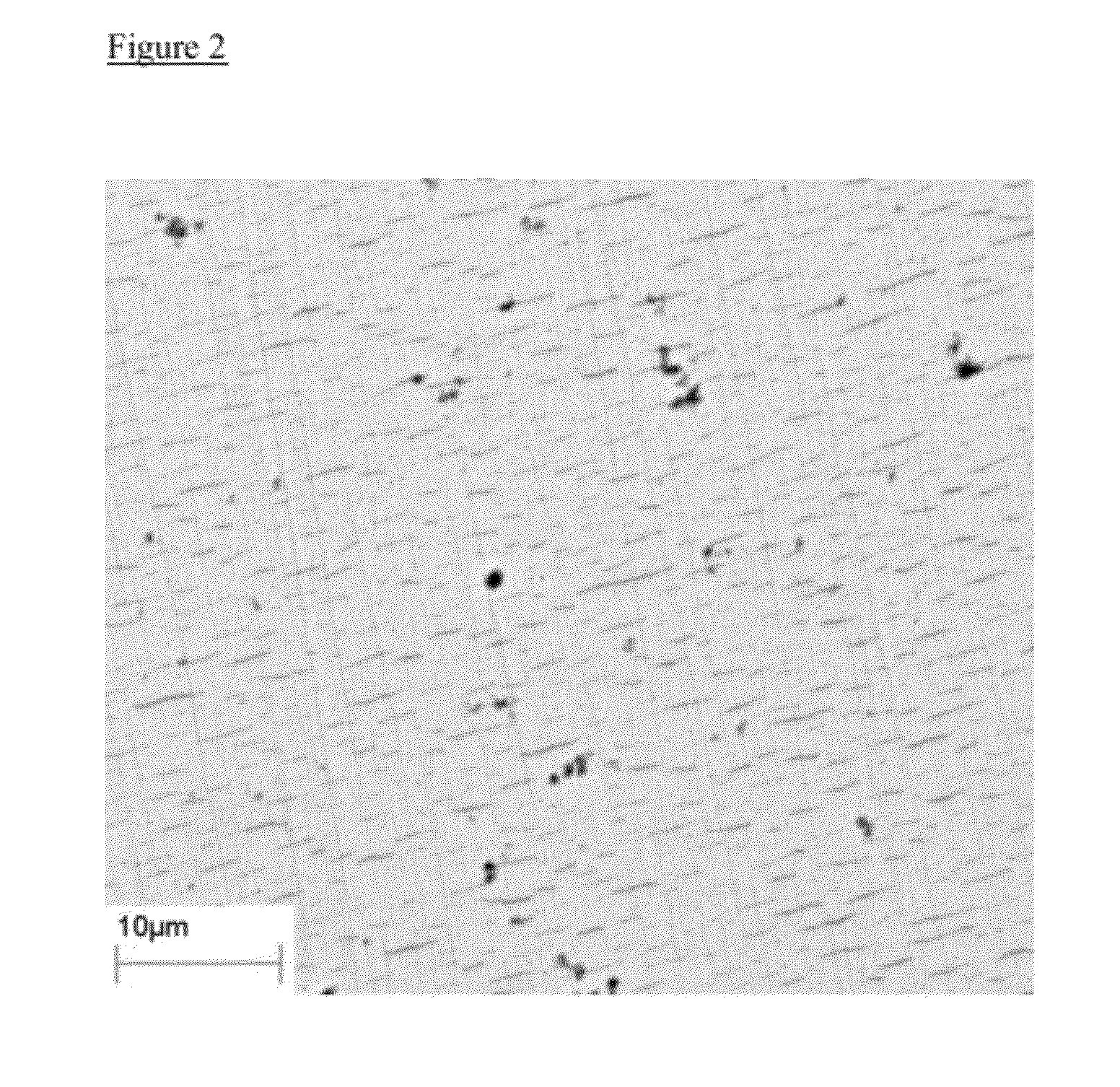Self-tuning of carrier concentration for high thermoelectric performance
a carrier concentration and high thermoelectric performance technology, applied in the manufacture/treatment of thermoelectric devices, non-metal conductors, conductors, etc., can solve problems such as difficult fabrication, and achieve the effect of increasing temperature and solubility limi
- Summary
- Abstract
- Description
- Claims
- Application Information
AI Technical Summary
Benefits of technology
Problems solved by technology
Method used
Image
Examples
example 1
Generally
[0050]The inventors demonstrate herein a new mechanism for functionally grading composite materials, by utilizing the temperature dependence of a dopant concentration in the matrix in equilibrium with a reservoir of excess dopant. In this way, the thermoelectric properties are directly controlled by the temperature without requiring spatial control of the dopant concentration. With the combination of the inventors' previous achievement, of which Ag2Te (and others [18]) nano-precipitates in PbTe reduce κL to near the amorphous limit and allow independent doping control that results in zT of ˜1.5 at 775 K with La doping [7], an excess of metallic Ag is used to control the carrier density in PbTe / Ag2Te composites. The appropriate temperature-dependent solubility limit of Ag in PbTe:Ag—Ag2Te composite material enables an increase in n with increasing T. This allows a single material to be naturally functionally graded, enabling an average zT ˜50% higher than composites optimize...
example 2
Experiments and Results
[0051]Four (AgxPbTe)0.945(Ag2Te)0.055 composites (x=0.01, 0.02, 0.03 and 0.04) were synthesized, as was Ag0.04PbTe for comparison; the experimental procedures and property measurement details can be found elsewhere [7]. FIG. 1 shows the temperature dependent Seebeck coefficient (a), electrical conductivity (b), Hall coefficient (c), and thermal conductivity (d). The varying of silver content from 1-4%, has little effect on the transport properties, indicating dopant saturation likely accompanied by the formation of a second phase. An image taken via scanning electron microscopy is shown in FIG. 2 for x=0.01. In addition to the expected nano-precipitates of Ag2Te (dark short plates), metallic Ag is also observed (the black spots), which is consistent with the suspicion that the solubility limit of Ag has been reached in all samples.
[0052]The increase in σ and decrease in |S| with increasing T is opposite to the behavior observed in the heavily doped semiconduct...
example 3
Conclusion
[0071]In summary, significant enhancement of thermoelectric performance is found in PbTe / Ag2Te with excess Ag, and is explained by the temperature-dependent solubility limit of metallic Ag which provides an increase in the carrier density with increasing temperature. Both the TE efficiency dependence on ne, and the temperature dependent solubility of dopants are general phenomena in the field of thermoelectrics, making this approach to functionally graded thermoelectric materials generally applicable to other systems.
PUM
| Property | Measurement | Unit |
|---|---|---|
| carrier concentration | aaaaa | aaaaa |
| carrier concentration | aaaaa | aaaaa |
| carrier concentration | aaaaa | aaaaa |
Abstract
Description
Claims
Application Information
 Login to View More
Login to View More - R&D
- Intellectual Property
- Life Sciences
- Materials
- Tech Scout
- Unparalleled Data Quality
- Higher Quality Content
- 60% Fewer Hallucinations
Browse by: Latest US Patents, China's latest patents, Technical Efficacy Thesaurus, Application Domain, Technology Topic, Popular Technical Reports.
© 2025 PatSnap. All rights reserved.Legal|Privacy policy|Modern Slavery Act Transparency Statement|Sitemap|About US| Contact US: help@patsnap.com



